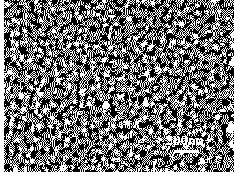Preparation method of ordered polyaniline nano-wire array
A technology of nanowire array and polyaniline, which is applied in the direction of nanotechnology, nanotechnology, nanotechnology for materials and surface science, etc., can solve the problem that the orientation and order of polyaniline nanowires/tubes are easy to be destroyed, difficult to Realize the precise control of the density, position and size of polyaniline nanowires, and achieve the effects of controllable direction, increased array order, and ultra-fine diameter
- Summary
- Abstract
- Description
- Claims
- Application Information
AI Technical Summary
Problems solved by technology
Method used
Image
Examples
Embodiment 1
[0025] Put the clean semiconductor silicon wafer in the hydrochloric acid solution of aniline (dissolve aniline in hydrochloric acid with a mass content of 37%), then add the oxidant ammonium persulfate to the hydrochloric acid solution of aniline, and grow polyaniline nanometers on the semiconductor silicon wafer by oxidizing aniline. Wire. The mass ratio of aniline:oxidant:hydrochloric acid is 5:3:1000, and the reaction time is 120min. The obtained polyaniline nanowire scanning electron microscope picture is attached figure 1 shown.
Embodiment 2
[0027] (1) The precursor manganese nitrate for preparing the oxide layer is dissolved in a good solvent methanol to form a precursor solution, and the precursor solution is spin-coated on the surface of the semiconductor silicon wafer, and then the oxide layer is formed by process-controlled calcination. Among them, the mass ratio of manganese nitrate:methanol is 10:1000; the program-controlled calcination program heating rate is 1°C / min, the temperature rises to 600°C, the constant temperature is 600°C, and the constant temperature time is 2h; the temperature is lowered to room temperature, and the cooling rate is 1°C / min.
[0028] (2) Dissolve the block copolymer polystyrene-b-poly(4-vinylpyridine) in a good solvent chloroform to form a spin-coating solution, and then spin-coat the spin-coating solution on the oxide layer, polystyrene-b- The mass ratio of poly(4-vinylpyridine) to chloroform was 1:250, and the spin coating was carried out in two steps: first, slow spin coati...
Embodiment 3
[0035] (1) The precursor manganese nitrate for preparing the oxide layer is dissolved in a good solvent methanol to form a precursor solution, and the precursor solution is spin-coated on the surface of the semiconductor silicon wafer, and then the oxide layer is formed by process-controlled calcination. Among them, the mass ratio of manganese nitrate: methanol is 2:1000; the programmed heating rate of programmed calcination is 1°C / min, the temperature rises to 600°C, the constant temperature is 600°C, and the constant temperature time is 2h; the temperature is lowered to room temperature, and the cooling rate is 1°C / min.
[0036] (2) Dissolve the block copolymer polystyrene-b-poly(4-vinylpyridine) in a good solvent chloroform to form a spin-coating solution, and then spin-coat the spin-coating solution on the oxide layer, polystyrene-b- The mass ratio of poly(4-vinylpyridine) to chloroform was 1:1000, and the spin coating was carried out in two steps: first, slow spin coatin...
PUM
| Property | Measurement | Unit |
|---|---|---|
| molecular weight distribution | aaaaa | aaaaa |
Abstract
Description
Claims
Application Information
 Login to View More
Login to View More - R&D
- Intellectual Property
- Life Sciences
- Materials
- Tech Scout
- Unparalleled Data Quality
- Higher Quality Content
- 60% Fewer Hallucinations
Browse by: Latest US Patents, China's latest patents, Technical Efficacy Thesaurus, Application Domain, Technology Topic, Popular Technical Reports.
© 2025 PatSnap. All rights reserved.Legal|Privacy policy|Modern Slavery Act Transparency Statement|Sitemap|About US| Contact US: help@patsnap.com



